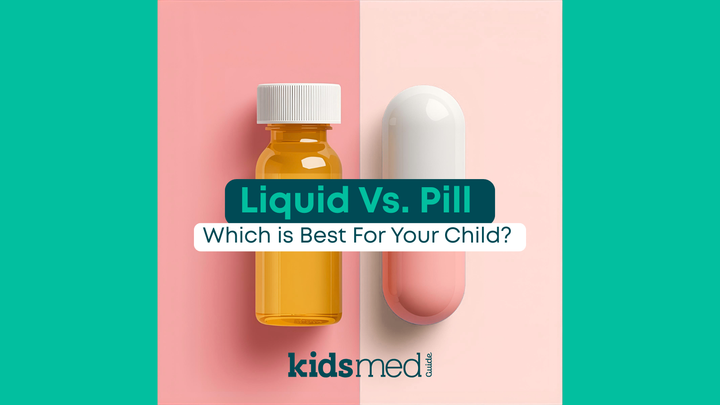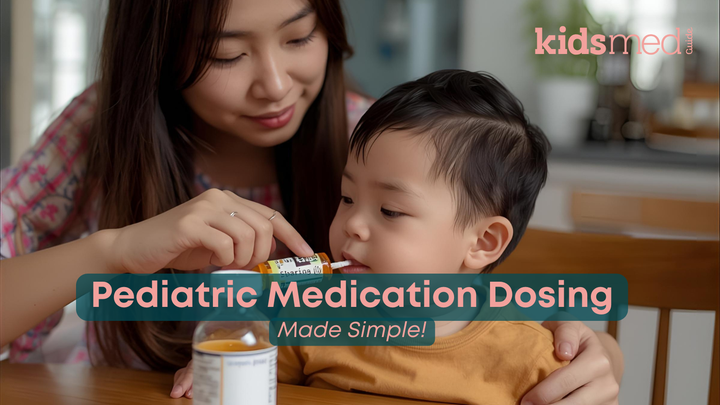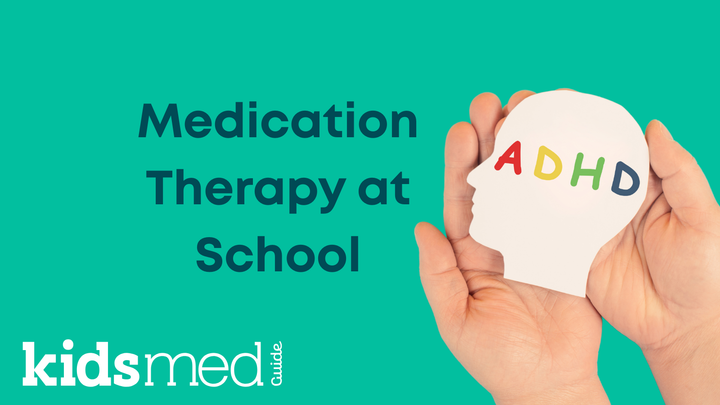Safe Use of Hand Sanitizer and Preventing Ingestion
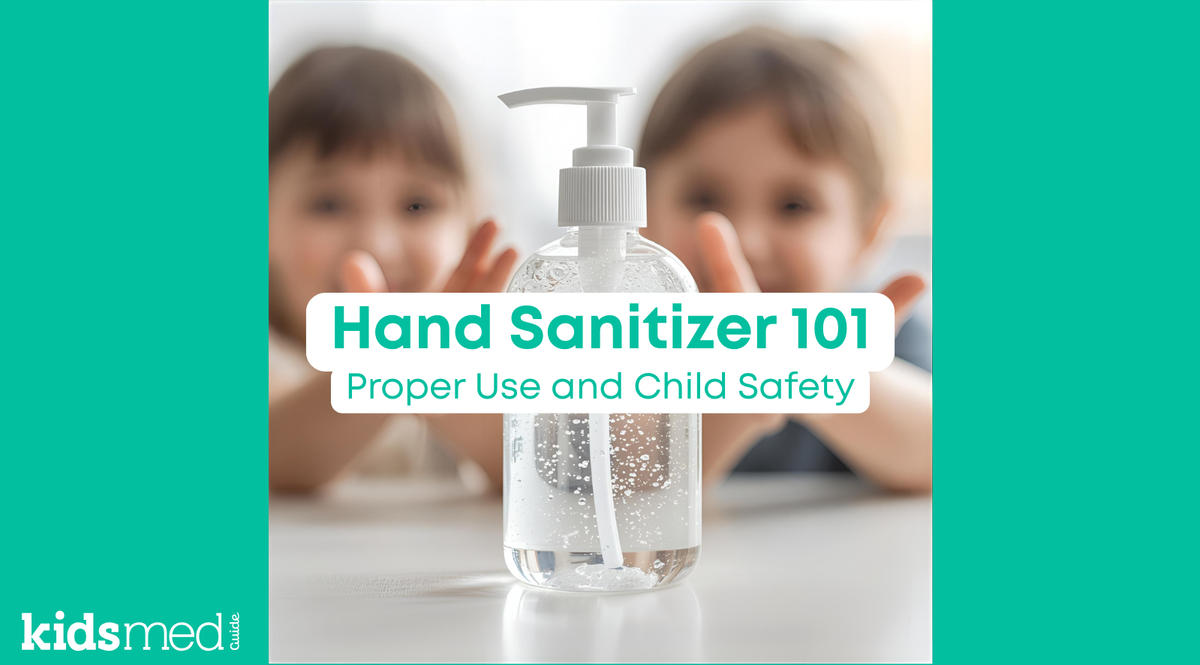
The Covid-19 pandemic highlighted the importance of proper handwashing for everyone, but handwashing is essential for preventing the spread of ALL kinds of germs, not just Covid. Like most of you, I never want to hear or see “wash for 20 seconds” again (pandemic PTSD?), but those bathroom signs are here to stay because handwashing truly is the first line of defense against getting sick.
Handwashing with soap and water is the gold standard and the best way to eliminate germs. However, soap and sinks are not always handy (get it?). That’s where hand sanitizers come in. They’re convenient, effective, and small enough to toss into backpacks, purses, and diaper bags. But like any product kids can get their hands on, they can cause harm if overused or ingested.
Read on for some tips about hand sanitizer safety!
Why Hand Sanitizer Safety Matters
Hand sanitizers are essential for decreasing germs when soap and water aren’t accessible. According to the CDC and the FDA, alcohol-based sanitizers can eliminate many common bacteria and viruses and are a suitable alternative when handwashing isn’t feasible.
The beauty, health, and wellness industries have adopted the hand sanitizer trend (if you have elementary or middle school girls, I’m sure you’re familiar with Touchland!). They market to everyone and everything, including children.
Hand sanitizer comes in fruity scents, playful packaging, and gel forms with glitter or sprinkles. While these products are attractive, they can lead to overuse and, worse, make sanitizers look like snacks.
According to America’s Poison Centers, even small amounts of ingestion can cause alcohol poisoning in children. Therefore, it’s important to understand the risks of accessible alcohol-based products for kids and how to prevent ingestion or toxicity.
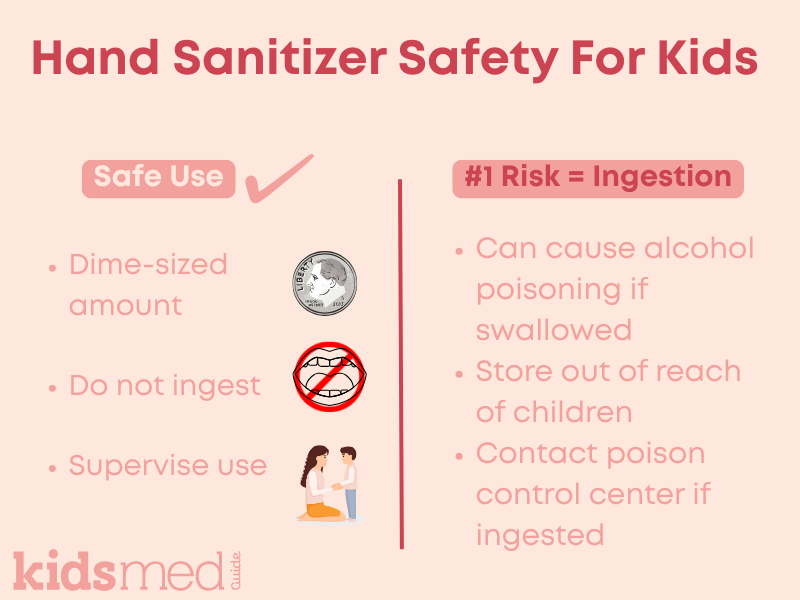
Types of Hand Sanitizers and How They Work
Alcohol-Based Hand Sanitizers
Alcohol-based sanitizers work by breaking down the protective membranes of bacteria and viruses, which kills germs on the hands and hopefully prevents the spread to oneself or others.
These are the most effective at killing germs, usually containing 60–70% alcohol but ranging from 40% to 95%. At least 60% is most effective for germ elimination. Supervision is crucial for children. A small, dime-sized amount, applied until dry, is sufficient, and it should be kept well away from mouths, noses, and eyes.
Alcohol-Free Hand Sanitizers
These often use benzalkonium chloride or other ingredients. They can be gentler on sensitive skin but are less effective against certain viruses. They may be an option for frequent use, though the CDC still recommends alcohol-based products as the first choice.
Gels, Foams, and Wipes
- Gels are the most common, easy-to-apply, and quick-drying.
- Foams spread evenly and tend to feel less sticky, which is a plus for kids with sensory issues.
- Wipes are portable and serve as a quick way to remove visible dirt.
Fact: Hand sanitizer isn't very effective against viruses like norovirus or bacteria such as C. difficile. Proper handwashing is the best method for these. Hand sanitizer doesn’t work well if hands are very dirty or greasy. While sanitizer might be better than nothing, it’s not as effective as washing hands.
Proper Hand Sanitizer Usage
Using hand sanitizers correctly is just as important as choosing the right type. Here’s the scoop!
- Apply a dime-sized amount (about two pumps or a quarter-sized dollop for foams)
- Rub your hands together, covering your fingers, palms, and backs of your hands. Keep rubbing until dry—this should take about 20 seconds.
- Use only when soap and water aren’t available, like in the car or on the playground.
- Keep away from the face, including the mouth, nose, and eyes.
For children, proper hand sanitizer usage means parents should pump the sanitizer into their hands or directly supervise their application.
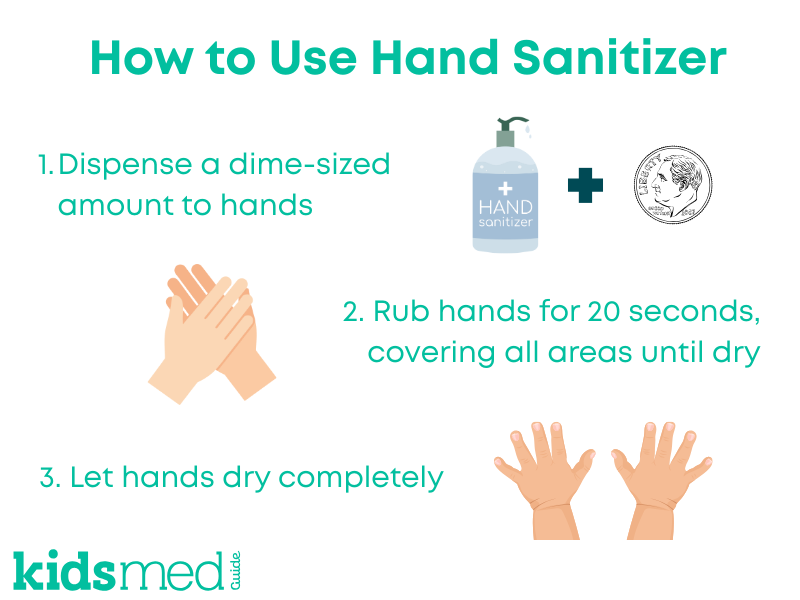
Preventing Accidental Ingestion and Child Safety
Alcohol-based hand sanitizers are the most common and effective option. Alcohol content varies, but a minimum of 60% alcohol is considered most effective. However, the alcohol content in hand sanitizer poses a safety risk for toddlers and children if ingested.
For reference, wine and beer typically contain about 5-10% alcohol, while hand sanitizer contains significantly more. The higher alcohol content in hand sanitizer means that even a small amount ingested could lead to alcohol poisoning in a child. The American Poison Control Centers handle thousands of cases of hand sanitizer ingestion each year.
The type of alcohol in hand sanitizer is also important. Ethanol and ethyl alcohol are considered the safest for children, while isopropanol and isopropyl alcohol are acceptable but can be more toxic if ingested. Methanol should never be used and has been recalled by the FDA due to toxicity and safety concerns.
The FDA maintains a “do not use” list of ingredients that may be helpful for parents to reference.
In addition to ingestion, parents should be aware of the risks of overusing sanitizer on the skin, especially in young children. Children and babies have thinner, more delicate skin than adults, making it easier for topical products to penetrate and cause irritation.
Hand sanitizer is also flammable. Keep the product away from stoves, heaters, and open flames. Warn your older kids and teens about this risk.
To safely choose and use hand sanitizer products in children, keep the following in mind:
- Store sanitizers out of children's reach, just as you would medicines. Children should not have unrestricted access. Please note that these products do not come with childproof safety caps.
- Choose simple, plain bottles when possible; glitter and fruity scents can tempt little ones (and even older ones) into tasting them.
- Remind kids it’s “for hands, not mouths,” and try to prevent them from licking their hands before the product dries (ideally, they don’t lick their hands at all, but… kids!). Teach your young kids to ask before using it, and teach your older kids to use it responsibly and sparingly.
- Ask staff at schools and daycare centers about their sanitizing policies and supervision practices.
If accidental ingestion happens, call Poison Control (1-800-222-1222) right away.
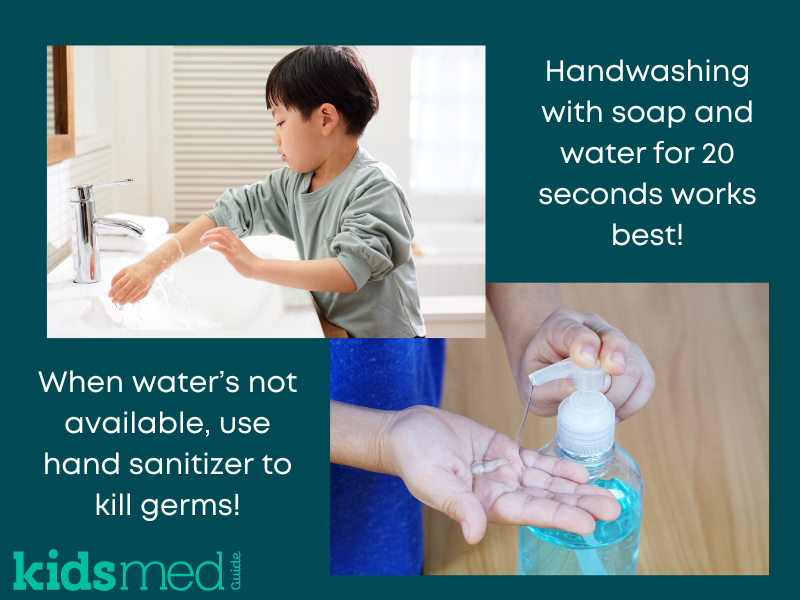
When to Seek Medical Attention
Contact your pediatrician or poison control center, or seek emergency medical care if your child:
- Drinks hand sanitizer, even a small amount.
- Shows symptoms like sleepiness, vomiting, confusion, or trouble breathing.
- Gets sanitizer in their eyes and has persistent redness or pain.
Prompt action can prevent serious complications.
Conclusion
Hand sanitizers are a necessary and effective tool for fighting germs when soap and water aren’t nearby. By practicing hand sanitizer safety, supervising children, and teaching good habits, parents can make sure sanitizers do their job without causing harm. Stay healthy!
Frequently Asked Questions
What is the safest way for children to use hand sanitizer?
With adult supervision, using a small, pea-sized amount and rubbing until dry is safest.
Are alcohol-free sanitizers effective against germs?
They can help, but are usually less effective than alcohol-based sanitizers, especially against specific viruses.
How much hand sanitizer should be used at a time?
About a dime-sized amount is enough. Too much can increase the risk of accidental ingestion.
What should I do if my child ingests hand sanitizer?
Call Poison Control immediately at 1-800-222-1222 and seek medical care if symptoms develop.
How can parents teach children to use hand sanitizer safely?
Model proper use, supervise younger kids, and remind them that sanitizers are for hands only. Warn older kids and teens about the risks of ingestion and remind them that the product is flammable and should only be used as directed.
The following references were used to compile this information:
America’s Poison Centers—Hand Sanitizer. (n.d.). Retrieved September 21, 2025, from https://poisoncenters.org/track/hand-sanitizer
CDC. (2024a, April 30). Hand Sanitizer Guidelines and Recommendations. Clean Hands. https://www.cdc.gov/clean-hands/about/hand-sanitizer.html
CDC. (2024b, June 13). Hand Sanitizer Facts. Clean Hands. https://www.cdc.gov/clean-hands/data-research/facts-stats/hand-sanitizer-facts.html
Commissioner, O. of the. (2025). Safely Using Hand Sanitizer. FDA. https://www.fda.gov/consumers/consumer-updates/safely-using-hand-sanitizer
Hand Sanitizers: Keep Children Safe from Poisoning Risk. (2021, October 22). HealthyChildren.Org. https://www.healthychildren.org/English/health-issues/conditions/COVID-19/Pages/Keep-Hand-Sanitizer-Out-of-Childrens-Reach.aspx/1000?_gl=1*1w5qs72*_ga*NTYyMDAyMTQwLjE3NTg0Njg2NjY.*_ga_FD9D3XZVQQ*czE3NTg0Njg2NjUkbzEkZzAkdDE3NTg0Njg2NjUkajYwJGwwJGgw
Research, C. for D. E. and. (2024). FDA updates on hand sanitizers consumers should not use. FDA. https://www.fda.gov/drugs/drug-safety-and-availability/fda-updates-hand-sanitizers-consumers-should-not-use

